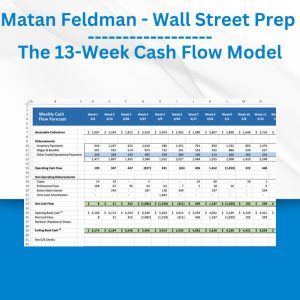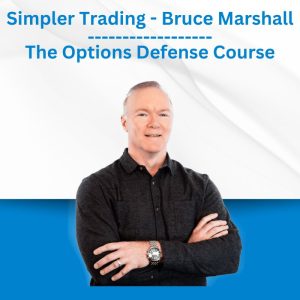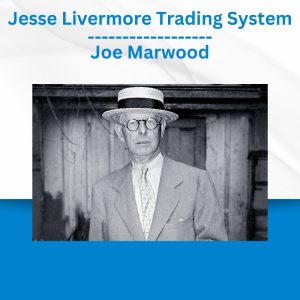*** Proof of Product ***
Exploring the Essential Features of “Martin Pring – Live in London (5 DVD)”
“Live in London” Advanced Course
DVD or Video Series
Lesson 1* – The Building Blocks of Technical Analysis
Lesson 2 – Introduction to Classic Price Patterns
Lesson 3* – One- and Two-bar Price Patterns
Lesson 4* – Introduction to Basic Momentum Principles
Lesson 5 – Introducing the KST
Lesson 6* – Applying Technical Analysis to the Theory
of Contrary Opinion
Lesson 7* – Practical Trading Tactics Applied to the Marketplace
In March 2003, Martin Pring appeared live at the Queen Elizabeth Center in Westminster, London, in front of 225 budding technicians. The event was professionally filmed using two cameras and digitally rendered animated graphics making you feel that you, too, have a front row seat at this unique educational experience. Judging by the following unsolicited comments the attendees were not disappointed!
Read what attendees had to say:
Absolutely storming seminar. Martin really has the knack of explaining Technical Analysis in a simple way. Great down to earth examples and strategies. Not only does he only teach you about tech analysis, he teaches you the entry and exit strategies, which are so important. Extremely useful and valuable information was taught by Martin. Thank you. – Mrs Sandhya Biggin
Martin Pring is a very able speaker on top of his subject. The information he has to impart is clearly presented . A must to anyone interested in Technical Analysis. I found his final section bought together what had been said during the day. Very professional. – T McLoughlin
Martin Pring’s delivery was excellent and he made a complicated subject much more understandable. His trading section was especially useful. – Mr R.A Cutler
Thanks Martin, Excellent days information. It looks like you can really eat an elephant one mouthful at a time. With the video and work book I look forward to using your information to excellent effect. Thank you. – Mark Watson
Watch It!
In his usual style, Martin explains both the strengths and weaknesses of the techniques he describes in each 75+ minute lesson. Why not share this experience at a fraction of the cost of attending a seminar by purchasing one or more titles in his new series? And as with all the “Pring” videos, the presentation is full of actual examples in the market place.
Lesson 1 – The Building Blocks of Technical Analysis
This presentation is a basic introduction for anyone new to the fascinating subject of technical analysis.
- Technical Analysis – What it is. Why prices are determined by psychology and how technical analysis can help interpret market psychology.
- Trends – What is a trend? How long do they last? How do they integrate?
- Arithmetic vs. Logarithmic Scaling – Technical analysis requires charts and the choice of scaling them can be very important. This section explains the difference between these techniques and why one is superior over the other.
- Volume – Observations on volume interpretation.
- Peak and Trough Analysis – Why it’s probably the most important technical tool. How is it applied in the market place and integrated with other indicators.
- Trendlines – A to Z introductory primmer on trendlines, how to draw and interpret them.
- Price Patterns – Basic principles of price pattern interpretation using rectangles and head and shoulders patterns as examples. Determining the significance of individual patterns and identifying when they have failed is also covered.
Lesson 2 – Introduction to Classic Price Patterns
This session introduces you to the most common price patterns. Building on the knowledge leaned from the previous DVD, you will be in a better position to understand how patterns are formed and the psychology behind them. If you can rationalize why a pattern is being formed, you will be in a better position to anticipate when a breakout might turn out to be a whipsaw, and how you can protect against this. This session also explains how price objectives are determined from patterns. A large number of market place examples in all time frames is generously dispersed throughout the presentation. The individual formations covered are:-
- Rectangles
- Head and shoulders tops and bottoms
- Triangles
- Double tops and bottoms and triple formations, including “Chinese” and “Lucky seven” double bottoms.
- Broadening formations, broadening wedges and giant wedges
- Cup and handle formations
Lesson 3 – One- and Two-bar Price Patterns
Prices in any freely traded market are determined by psychology. One- and two-bar price patterns represent classic examples of how these emotional characteristics are reflected in the charts.
- The great advantage of these extremely reliable patterns is that they signal reversals in trend at a very early stage, both on the intraday and daily charts..
- The presentation also explains that not all patterns are created equal. Pring gives you a checklist for determining the significance of each type.
- Patterns covered include the “Big Seven”,
-
- Outside bars
- Inside bars
- Two-bar reversals
- Exhaustion bars
- Key-bar reversals
- Pinocchio bars
- Three-bar reversals
Lesson 4 – Introduction to Basic Momentum Principles
Market momentum provides a powerful dynamic to any trading arsenal. In this presentation Martin Pring explains that momentum is a generic term embracing a host of oscillators. Each is subject to the same rules of interpretation in some form or another. Key techniques are explained in detail.
- They are —
- Overbought/ oversold
- Divergences
- Oscillator characteristics in bull and bear markets
- Trendlines applied to momentum
- Price patterns applied to momentum
- Moving averages applied to momentum
- Individual oscillators that are explained include the rate-of-change, RSI, and MACD. Practical application of these indicators is demonstrated with a host of market place examples.
Lesson 5 – Introducing the KST
The KST is a momentum indicator invented by Martin Pring. It is a summed rate of change that combines several time spans into one indicator. It is designed so that the oscillations correctly reflect the up and down waves of the trend being monitored. However, the inclusion of short-term time frames in the indicator’s construction allow it to turn more quickly than many other indicators, thereby warning of a trend reversal on a more timely basis. Topics covered include:
- The Rationale
- The Long-term KST (primary trend)
- The Short (daily) and Intermediate (weekly) KSTs
- Integrating the Three Trends
- The Intraday KST
- Using the KST with Relative Strength
Oh, and you’ll also find out what KST stands for and find the various formulas, including those for MetaStock users in the downloadable .PDF file included on the presentation.
Lesson 6 – Applying Technical Analysis to the Theory of Contrary Opinion
In recent years, the theory of Contrary Opinion has become very popular, but also misunderstood. In this presentation Martin explains why this is so, and how this art can be profitably applied to the marketplace. He takes you through a step-by-step process of how to form a contrary opinion. He also demonstrates why it is difficult to take a contrary position and how to overcome this hurdle.
Going against the crowd is usually the correct thing to do, but it can be frustratingly (and unprofitably) early, as many bears found out to their chagrin in 1927 and 1928. Since charts reflect crowd psychology, technicians are in a unique position to utilize the art of contrary thinking and create razor sharp timing. A key part of this presentation explains techniques for integrating the two. This presentation wraps up by describing, and debasing, seven popularly held market myths.
Lesson 7 – Practical Trading Tactics Applied to the Marketplace
Lots of time is spent on learning the principles of technical analysis, but precious little is devoted it its practical application in the marketplace. In this presentation Martin shows you numerous techniques that you can apply for more profitable trading.
- He sets out by explaining, with the aid of examples, why the first objective of any trader should be to avoid major losses, rather than trying to make major gains.
- One technique for achieving this goal is the correct placement of stops below support and above resistance. Rules for assessing potential support/resistance zones are discussed using the following technical tools –
- Gaps
- Emotional Points
- Trendlines
- Moving Averages
- Retracement moves
- Previous highs and lows
- Technicians would love to know ahead of time whether the market they are trading is likely to trend or become a trading range. Unfortunately, this is not possible. However, Martin explains a trading plan that can deals profitably with both environments.
- Finally, since the biggest obstacle to any trader is emotion, Martin offers ten tips to better overcome your natural tendencies and become a more objective trader.
Please see the full list of alternative group-buy courses available here: https://lunacourse.com/shop/










 Chris Capre - Advanced Price Action Ongoing Training & Webinars
Chris Capre - Advanced Price Action Ongoing Training & Webinars  Greg Loehr - Advanced Option Trading With Broken Wing Butterflies
Greg Loehr - Advanced Option Trading With Broken Wing Butterflies  Emanuele Bonanni - My Trading Way
Emanuele Bonanni - My Trading Way  Oliver Velez - Essential Strategy Of Trade For Life
Oliver Velez - Essential Strategy Of Trade For Life  Racing Workshop - Complete Online Package
Racing Workshop - Complete Online Package  Fred Haug - Virtual Wholesaling Simplified
Fred Haug - Virtual Wholesaling Simplified  Matthew Kratter - Trader University
Matthew Kratter - Trader University  Erik Banks - Alternative Risk Transfer
Erik Banks - Alternative Risk Transfer  Jesse Livermore Trading System - Joe Marwood
Jesse Livermore Trading System - Joe Marwood  George Fontanills & Tom Gentile - Optionetics Wealth Without Worry Course
George Fontanills & Tom Gentile - Optionetics Wealth Without Worry Course  Julie Stoian & Cathy Olson - Launch Gorgeous - Funnel Gorgeous Bundle
Julie Stoian & Cathy Olson - Launch Gorgeous - Funnel Gorgeous Bundle